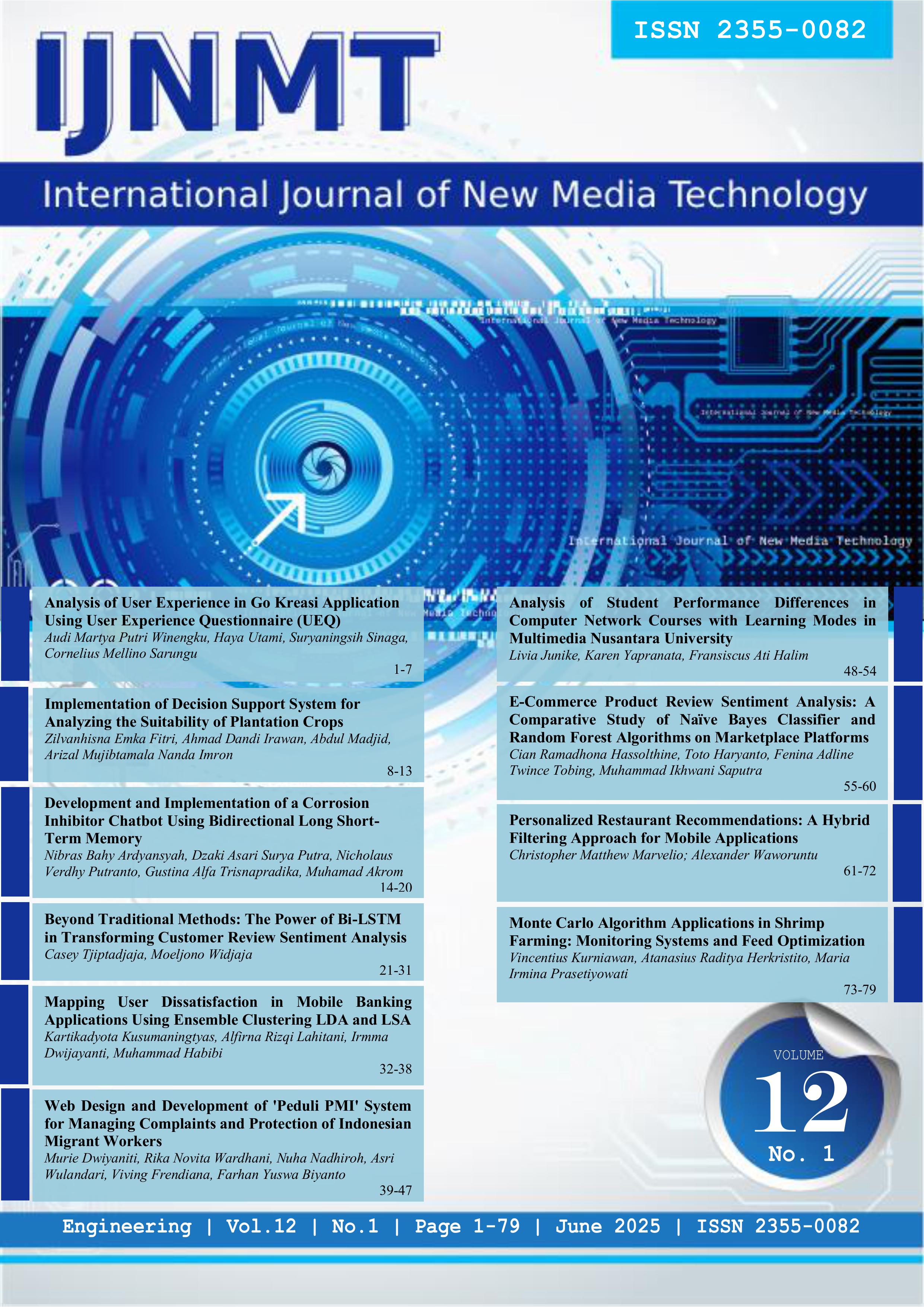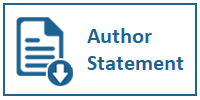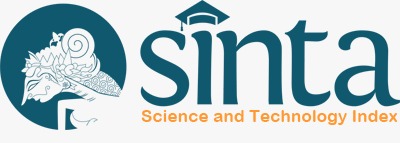Monte Carlo Algorithm Applications in Shrimp Farming: Monitoring Systems and Feed Optimization
DOI:
https://doi.org/10.31937/ijnmt.v12i1.4301Abstract
Indonesia is one of the world’s leading maritime nations, ranking second in fishery export value in 2020 [1]. Shrimp stands out as the most lucrative commodity, with an export value of USD 1,997.49 million [2]. Feeding shrimp plays a vital role in their growth and cultivation; however, overfeeding can result in feed residue that negatively impacts the quality of pond water and represents the biggest operational after capital expenditure [3]. The profitability of shrimp farming heavily depends on the feeding cost. This study using the Monte Carlo algorithm to track feed in shrimp and provides an optimal feeding plan. The algorithm can be used to provide feed recommendations for shrimp start from 33 days of cultivation (DoC), with an best range around 85kg to 92kg. The findings show the potential of the Monte Carlo algorithm in enhancing feeding plan in shrimp farming industries.
Index Terms— Cultivation; Feeding; Feed Recommendations; Margin; Monte Carlo; Operational Cost; Pond Water; Shrimp Farming
Downloads
Downloads
Published
How to Cite
Issue
Section
License
Copyright (c) 2025 Vincentius Kurniawan, Atanasius Raditya Herkristito, Maria Irmina Prasetiyowati

This work is licensed under a Creative Commons Attribution-ShareAlike 4.0 International License.
Authors retain copyright and grant the journal right of first publication with the work simultaneously licensed under a Creative Commons Attribution-ShareAlike International License (CC-BY-SA 4.0) that allows others to share the work with an acknowledgement of the work's authorship and initial publication in this journal.
Authors are able to enter into separate, additional contractual arrangements for the non-exclusive distribution of the journal's published version of the work (e.g., post it to an institutional repository or publish it in a book), with an acknowledgement of its initial publication in this journal.
Copyright without Restrictions
The journal allows the author(s) to hold the copyright without restrictions and will retain publishing rights without restrictions.
The submitted papers are assumed to contain no proprietary material unprotected by patent or patent application; responsibility for technical content and for protection of proprietary material rests solely with the author(s) and their organizations and is not the responsibility of the IJNMT or its Editorial Staff. The main (first/corresponding) author is responsible for ensuring that the article has been seen and approved by all the other authors. It is the responsibility of the author to obtain all necessary copyright release permissions for the use of any copyrighted materials in the manuscript prior to the submission.















